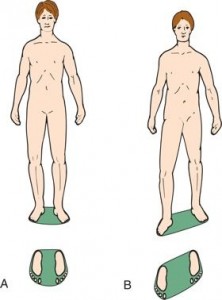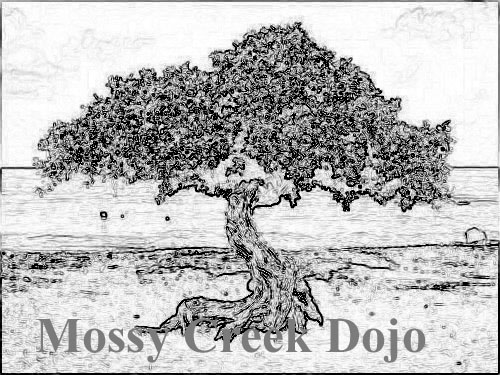 In the martial arts world, we talk a lot about center of gravity of a person. We generally refer to the center of gravity of a male as being a few inches below the navel; but is this the correct location? Is center of gravity even what we are concerned about in our usual martial arts parlance? Or do we mean something different?
In the martial arts world, we talk a lot about center of gravity of a person. We generally refer to the center of gravity of a male as being a few inches below the navel; but is this the correct location? Is center of gravity even what we are concerned about in our usual martial arts parlance? Or do we mean something different?
For this post I am going to first need to define a few terms.
1) Center of gravity – a hypothetical point around which the force of gravity appears to act. More scientifically, the center of gravity is the point in a body around which all the different gravity forces trying to rotate a body vanish.
2) Center of mass – for our purposes this is an interchangeable term with center of gravity  since we are assuming most of our encounters will happen near the surface of the earth against human sized opponents.
since we are assuming most of our encounters will happen near the surface of the earth against human sized opponents.
3) Base of Support – the area circumscribed by a line that encircles whatever body part is in contact with the ground. Typically for two feet on the ground the base of support is the space from the outer edge of the feet and the space between the feet seen in the figure as the green shaded area.
When standing up with arms down to the side like in the DaVinci drawings, the center of gravity lies in front of the second sacral vertebra which is close to the 2 inches below the navel. If we want to be more precise you can look through the link below to NASA’s information on space ship design to calculate a center of gravity for different size people. Specifically look at Figure 3.3.7.3.2.1-2. You can even calculate center of gravities for different body parts. However, since human beings do not remain fixed in position, the precise location of the center of gravity changes constantly with every new position of the body and limbs.
http://msis.jsc.nasa.gov/sections/section03.htm
Most of the time when we start discussing center of gravity we are in a conversation trying to figure out how best to cause someone to fall down – to go from being on two feet (i.e. two points in contact with the ground) to having more than these two contact points with the ground (i.e. on hands and knees, supine or prone on the ground, etc). To understand center of gravity in this context we need to talk a bit about what keeps the human body stable on two feet from a mechanical standpoint. There are at least five items that impact stability.
1) To improve stability, we can increase our base of support like spreading our feet apart when pushed from the front. If we are pushed from the front we would increase the length of our base anterior to posterior (i.e. front to back). In this instance widening our stance would not help stop a force coming from the front.
2) We can also improve stability by lowering our center of gravity. Bending knees into a jigotai stance is a great example. This is why SUVs with a higher center of gravity roll over easier than a Corvette with a lower center of gravity.
3) The mass of a body also determines stability – a heavier object is harder to move than a lighter one. This is why football lineman are the heaviest players on a football team.
4) Friction with the ground does come into play some also. If we try to do judo on the icy parking lot it would be easier to throw someone. Assuming we could also stand to do the throw in the first place.
5) Lastly the location of the center of gravity within the base of support matters. This is what we often try to depict when we pull uke up on his toes, get him leaning out and having to hold onto tori for support (in essence increasing the base of uke) then pull that support away and uke falls.
For our purposes our current definition of center of gravity is accurate enough; however, we are more interested in disturbing someones balance, kyzushi, and this will require a deeper understanding of center of gravity in relation to base of support which will be a topic for a future article.
Dr. Allum, my sports medicine colleague, or Dr. Parker, my kinesiology colleague will I am sure find fault with some of my definitions and conclusions but we can refine this article further based on feedback. I am a Mississippi State graduate so I could not resist using a video from them to give some visual aids.
https://www.youtube.com/watch?v=2WUdHBso3Vk
